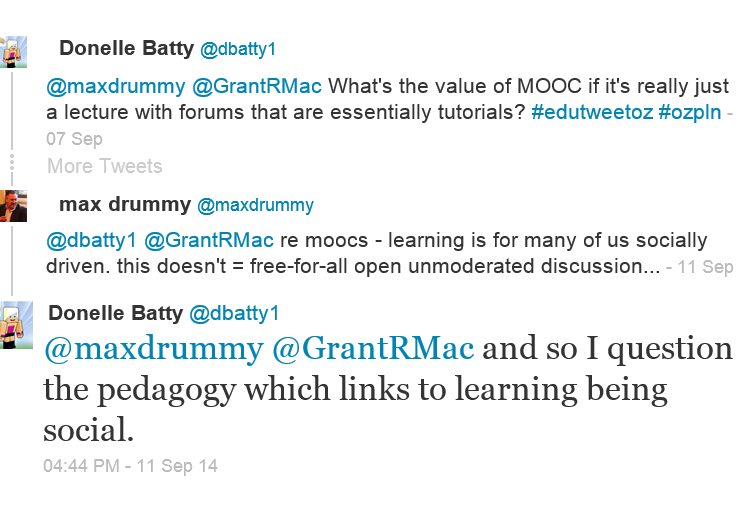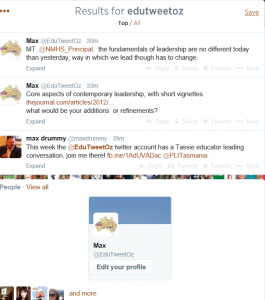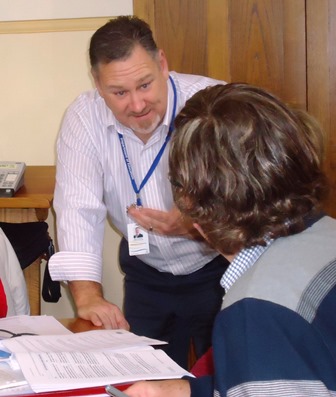Several colleagues and I recently engaged in a MOOC focussing on Collaborative Problem Solving. we have been debating and deconstructing the experience, in particular around the mode of delivery. I think we have consensus around the value of open content, but are grappling with the manner in which we might best “make meaning” in our own contexts.
So I used the word “social” to describe how I learn…maybe that’s not the best description, but as I reflect on my own learning, it’s optimised when I can reflect on inputs, and then make meaning in concert with others. This is not always a linear, or indeed synchronous process, but the notion of sharing and voicing perspectives enriches the learning significantly when compared to solo efforts.
ZPD has some relevance here; high value making meaning is dependant on informed, focussed thinking and dialogue – some from outside the box, sure, but commonly aligned in terms of focus or output or outcome.
This is where the breadth of MOOC discussion forums challenges me. I respect the fact that there are many motivators for MOOC participation, and equally as many diversities across participants. What strikes me is the inherent potential to get lost in forums for days……without really leveraging learning.
The MOOC model won’t be for everyone; time, commitment, and personal engagement may all affect engagement, BUT they are free, open and can offer wonderful opportunities to access content AND learning.
Can we structure them better? On a local scale, the our Tasmanian Professional Learning Institute is grappling with personalising engaging and high yield online learning….seeking to make it more that a series of lectures down the camera. We hope to dip our toes in the water with this complex mode in the near future, and it will be really interesting to evaluate our success in facilitating the making of meaning in virtual environments.


